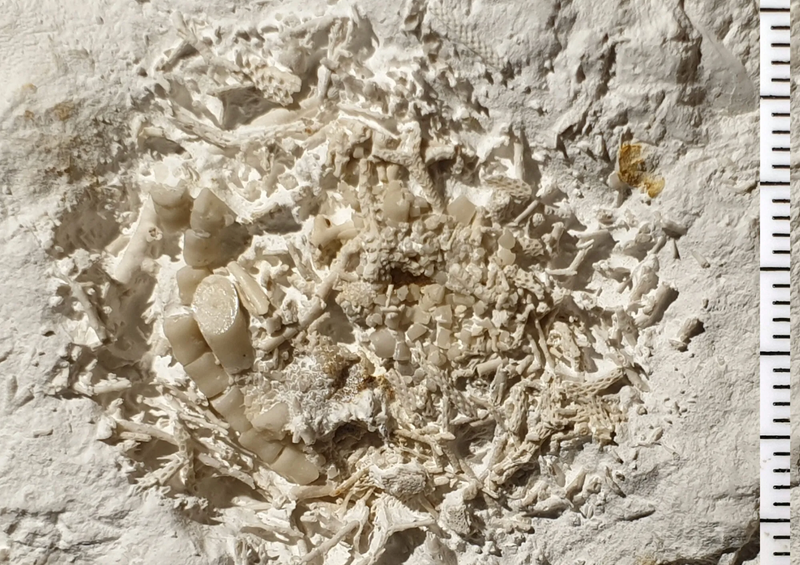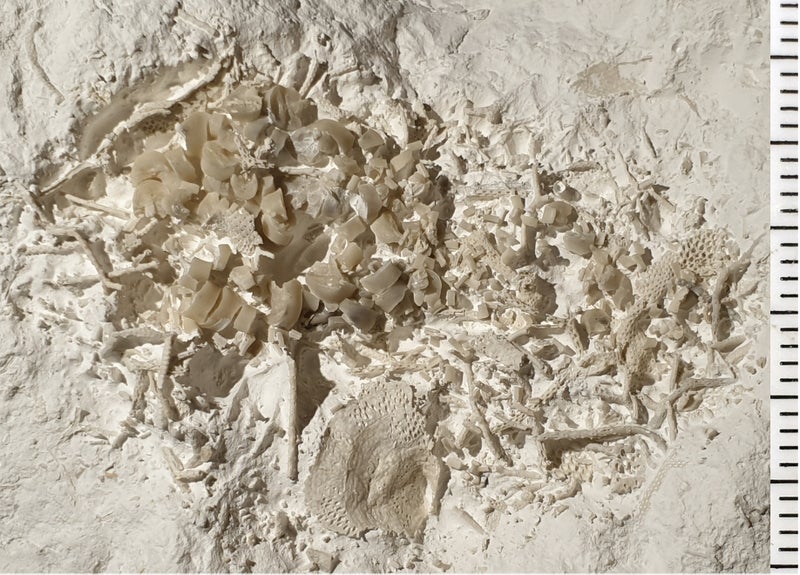‘Truly unusual’ fossil discovery shows us what fish ate 66 million years ago
‘Truly unusual’ fossil discovery shows us what fish ate 66 million years ago
Share:
Bizarre fossil found on Denmark’s Cliffs of Stevns is expected to go on display in February. An extremely rare dinosaur-era animal vomit fossil has been discovered in Denmark, the Museum of East Zealand announced on Monday. The find was made by an amateur fossil hunter on the Cliffs of Stevns, which offers “exceptional evidence” of the meteorite impact on Earth about 65 million years ago that brought an end to the era of dinosaurs, according to Unesco.
The fossil hunter, Peter Bennicke, stumbled upon an unusually hardened blob containing pieces of sea lily in a piece of chalk. He then brought his find to a museum where it was cleaned and examined by Dutch sea lily expert John Jagt. Researchers dated the fossil animal regurgitate to the end of the Cretaceous era nearly 66 million years ago.
They concluded the fossil vomit contained two species of sea lilies that were likely eaten by a fish. “The collection consisted of at least two different species of sea lilies mixed in a round clump and must be the remains of sea lilies eaten by an animal which had subsequently regurgitated the indigestible parts,” the Museum of East Zealand said in a statement.
Museum curator Jesper Milàn called the fossil a “truly unusual find”. “Sea lilies aren’t a particularly nutritious diet as they mainly consist of calcareous plates held together by very few soft parts,” Mr Milàn explained. “But here’s an animal, probably a type of fish, that 66 million years ago ate sea lilies that lived on the bottom of the Cretaceous sea and regurgitated the skeletal parts back up.”.






















